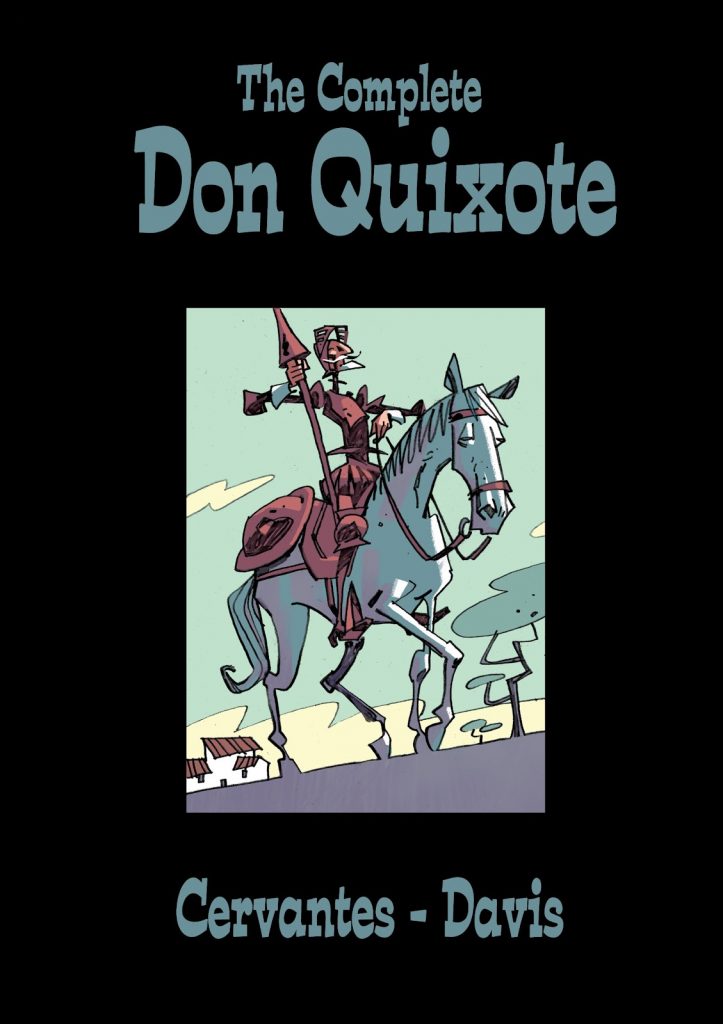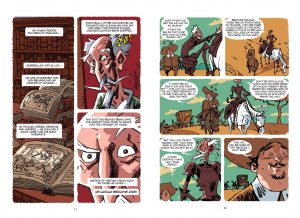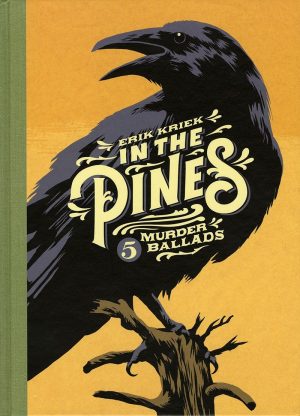Review by Frank Plowright
The 17th century story of Don Quixote is the foundation of the modern novel, and one of those stories everyone knows a little about, but may not have read. It’s actually two stories, first published ten years apart, but now always presented in a combined edition despite differing slightly in tone. The Don Quixote most people know is the knockabout comedy of the self-appointed knight attacking windmills, while the sequel is more concerned with deception and trickery. This is the Complete Don Quixote as Rob Davis originally issued his adaptation as two separate paperbacks, starting naturally enough with Volume One.
Don Quixote is actually a name the protagonist chooses for himself, considered noble for his new calling as an upstanding knight like those he’s read about. He takes his chivalrous duties seriously, but his delusional state is plain to almost all who come across him, and those who cannot see are soon convinced by his incompetence. The first half is largely a series of preposterous encounters, although not without the occasional serious point well made, such as a siren of the hills taking men to task for their attitude toward her. Despite being seen as a joke, Don Quixote actually has the nobility others can’t see in him. With no concern about his own safety he’ll charge in when he sees someone unable to defend themselves.
Davis produces a very credible adaptation, and his second sample page shows how comics are better able to emphasise jokes sometimes not given a proper punchline in the text. Davis keeps both the illustrations and colours simple, but modifies his style for flashbacks or the other stories comprising part of Don Quixote, and includes letters in the form of letters. Visually his protagonists are Laurel and Hardy in reverse, with the tall, slim guy pompous and in charge.
Given the original length, even approaching three hundred pages isn’t enough to adapt every nuance, but Davis has the advantage of being able to convey much text via illustration, and abridges very sympathetically, doing far more than just supplying the essence. He retains the audacious narrative, stories stopping and being picked up again, the meta-commentary on storytelling, and the twisting about of recurring themes, especially deception as the second story progresses. It’s the second half where the emphasis is altered, Davis delivering it as largely comedic, so matching the first escapades, and diminishing discussions of manipulation and deception. These are relegated to the final fifty pages with Quixote and Sancho Panza recast as figures of ridicule for the amusement of a Duke and Duchess. Previously Don Quixote had deceived himself, but here he’s deceived by others.
Davis strikes the right balance between Don Quixote as a figure of sympathy and one to laugh at, and rave reviews from readers intimately familiar with the novel are easily located online. The quality therefore isn’t an issue, just how much the idea appeals.





